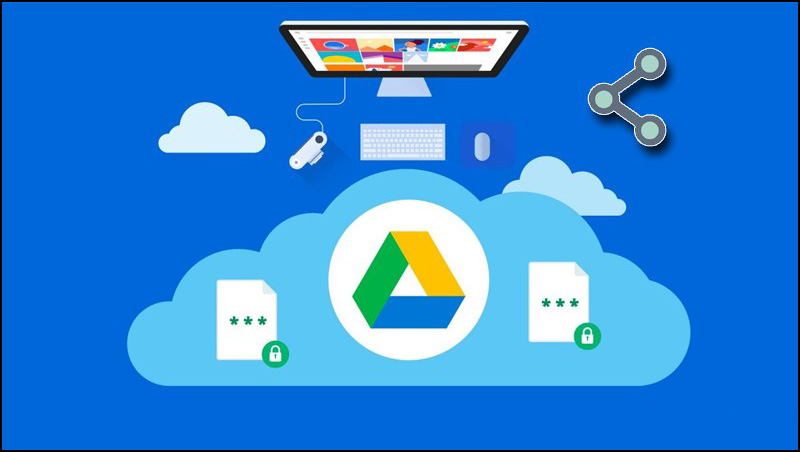File and folder management is an essential aspect of using Google Drive effectively. It involves organizing, renaming, moving, and deleting files and folders to keep your digital content structured and easily accessible. Here’s an introduction to file and folder management in Google Drive:
- Creating Files and Folders:
- To create a new file or folder in Google Drive, click on the “+ New” button on the left side of the interface and select the desired file type (e.g., Google Docs, Sheets, Slides) or “Folder” to create a new folder.
- Give the file or folder a descriptive name to make it easily recognizable.
- Organizing Files and Folders:
- Google Drive allows you to create a hierarchical structure by organizing files and folders into directories.
- To create a subfolder within an existing folder, right-click on the folder, select “New,” and choose “Folder.”
- To move files or folders, you can simply drag and drop them into the desired location within your folder structure.
- Renaming Files and Folders:
- To rename a file or folder, right-click on it and select “Rename.” Alternatively, you can click on the file or folder once to select it and then click on the “More options” icon (three vertical dots) in the toolbar and choose “Rename.”
- Enter the new name for the file or folder and press Enter to save the changes.
- Moving Files and Folders:
- Google Drive allows you to move files and folders within your Drive or across different folders.
- To move a file or folder, click and drag it to the desired location within your folder structure. You can also use the “Move to” option by right-clicking on the file or folder and selecting “Move to.”
- Deleting Files and Folders:
- To delete a file or folder, right-click on it and select “Remove” or “Move to trash.” Alternatively, you can select the file or folder and click on the “Trash” icon in the toolbar.
- Deleted files and folders are moved to the “Trash” section in Google Drive, where they remain for 30 days before being permanently deleted. You can restore or permanently delete items from the Trash section.
- Searching for Files and Folders:
- Google Drive provides a search bar at the top of the interface to quickly find specific files and folders.
- You can search by file or folder name, keywords, file type, owner, and other criteria. Enter your search query in the search bar, and Google Drive will display matching results.
SOME ADDITIONAL TIPS AND FEATURES RELATED TO FILE AND FOLDER MANAGEMENT IN GOOGLE DRIVE:
- File Preview and Quick Actions:
- Google Drive offers a file preview feature that allows you to view the contents of a file without opening it. For supported file types, you can click on the file to see a preview in the right-hand panel.
- In the file preview, you’ll find quick actions like printing, downloading, sharing, commenting, and more, accessible through icons or menus.
- Color Labels and Stars:
- You can assign color labels to files and folders in Google Drive to visually categorize and differentiate them. Right-click on a file or folder, go to “Add to…” and select a color label.
- Similarly, you can star important files or folders for quick access. Click on the star icon next to the file or folder to mark it as starred. You can filter your Drive to show only starred items using the “Starred” option in the left sidebar.
- Sharing and Collaborating:
- Google Drive offers robust sharing and collaboration features. You can share files and folders with specific individuals or groups, allowing them to view, comment on, or edit the content.
- When sharing, you can set permissions such as “Can edit,” “Can comment,” or “Can view” for each recipient. You can also generate shareable links with different access levels.
- Collaboration features enable real-time editing, commenting, and suggestions, making it easy to work together on documents, spreadsheets, presentations, and more.
- Revision History:
- Google Drive keeps a detailed revision history of files, allowing you to view and restore previous versions.
- To access the revision history, right-click on a file, go to “Version history,” and select “See version history.” You can view different versions, see changes made by collaborators, and revert to a previous version if needed.
- Offline Access:
- Google Drive offers offline access, allowing you to view and edit files even when you’re not connected to the internet.
- To enable offline access, go to the “Settings” (gear icon) in Google Drive, select “Settings,” and toggle on the “Offline” option. This allows you to access and edit files using Google Drive’s offline extension or mobile apps.
- Advanced Search Filters:
- Google Drive’s search functionality includes advanced filters to refine your search results further.
- You can search for files by file type, owner, date modified, keywords within the file, and more. Click on the small arrow at the end of the search bar to access advanced search filters.
These features can enhance your file and folder management experience in Google Drive, enabling you to personalize organization, streamline collaboration, and quickly find the content you need. Remember to review and adjust sharing settings, permissions, and access levels to ensure the privacy and security of your files and folders.
By effectively managing your files and folders in Google Drive, you can maintain an organized digital workspace, locate files easily, collaborate efficiently, and ensure your important documents are properly stored and backed up.
